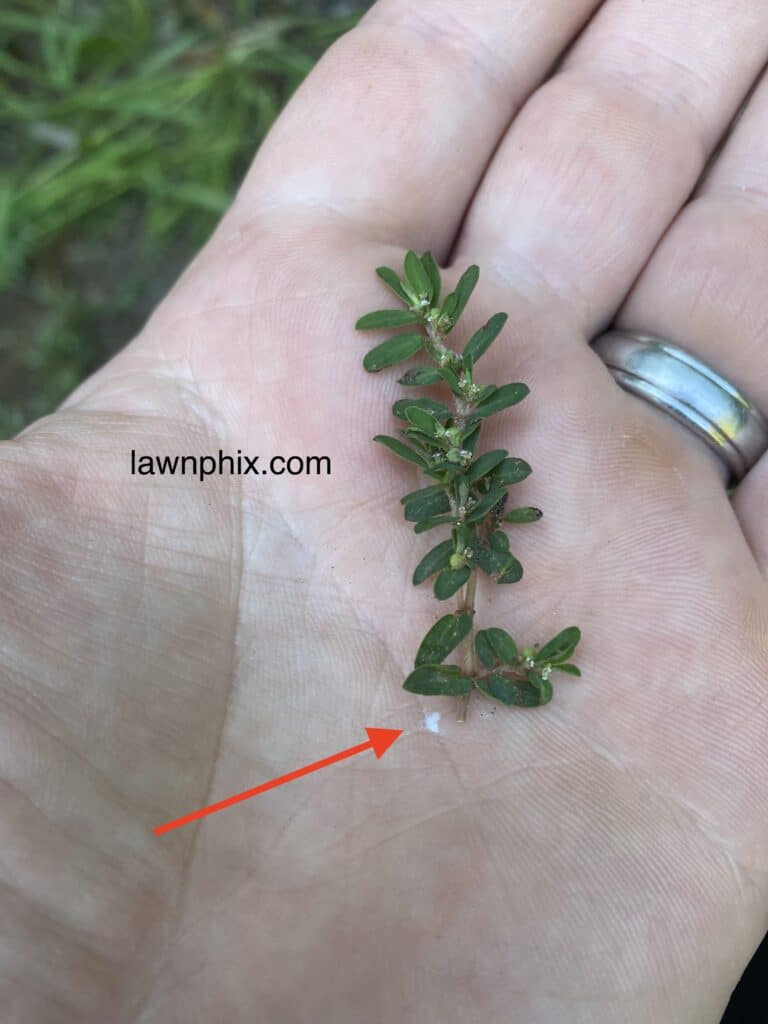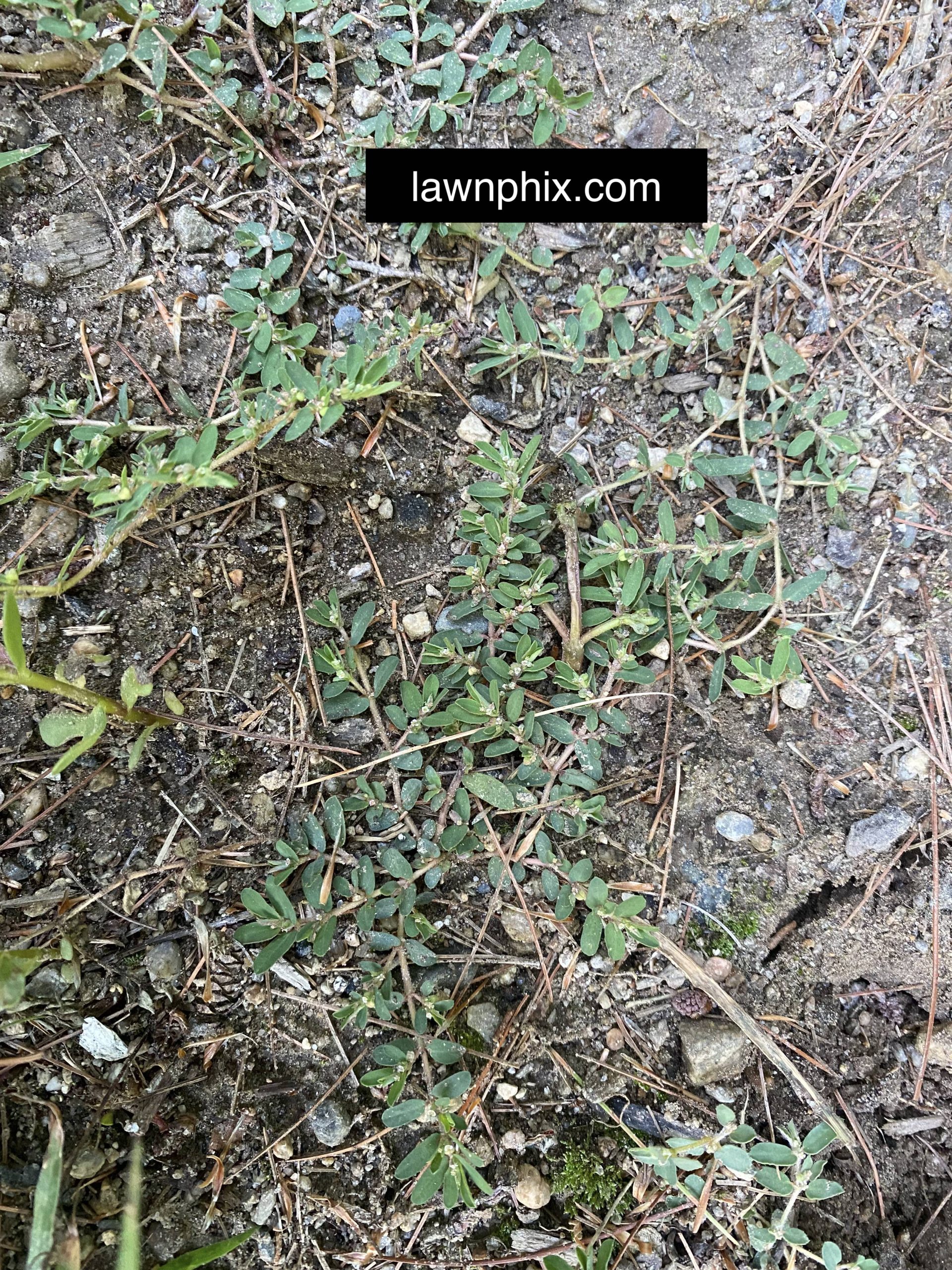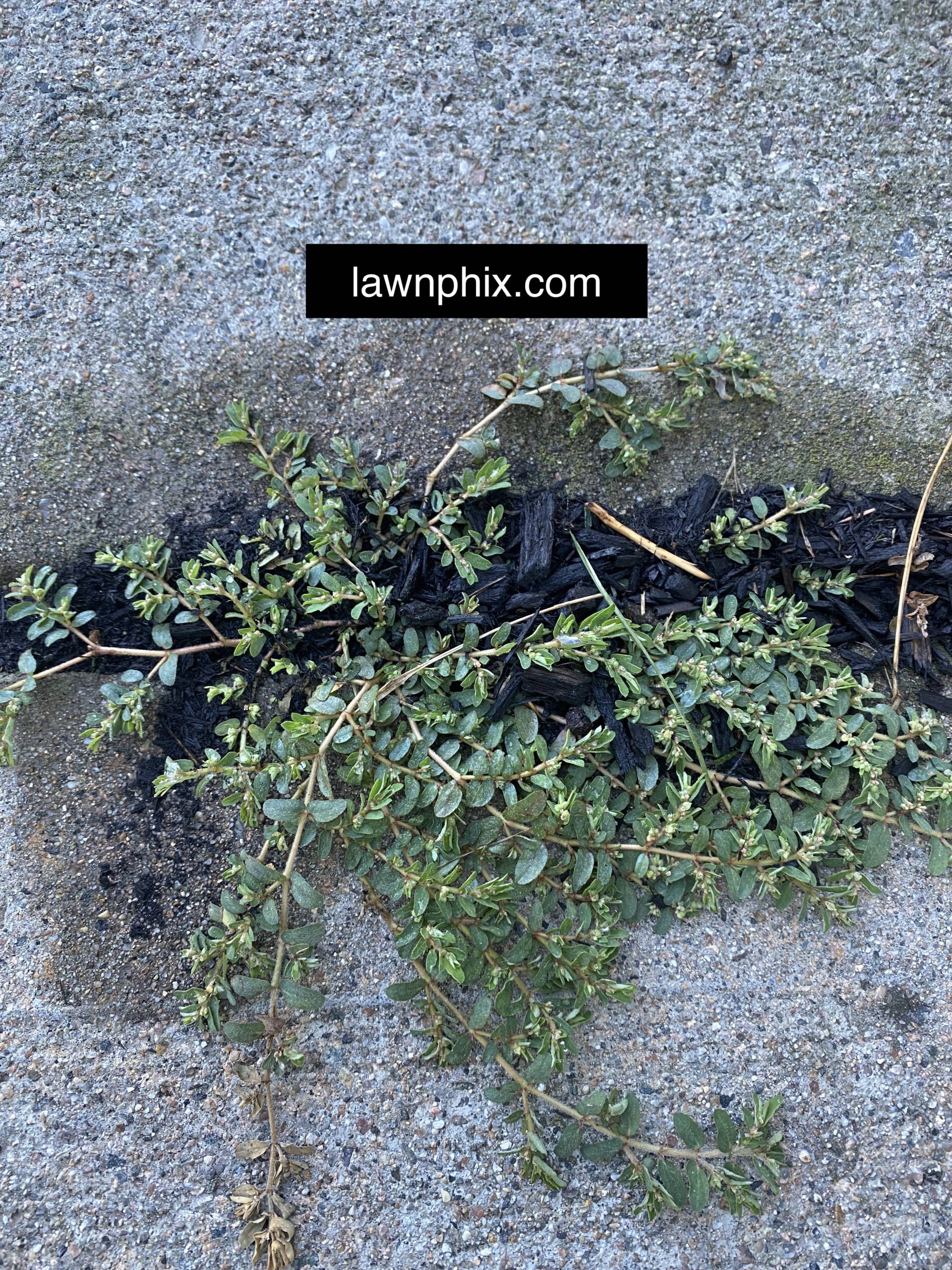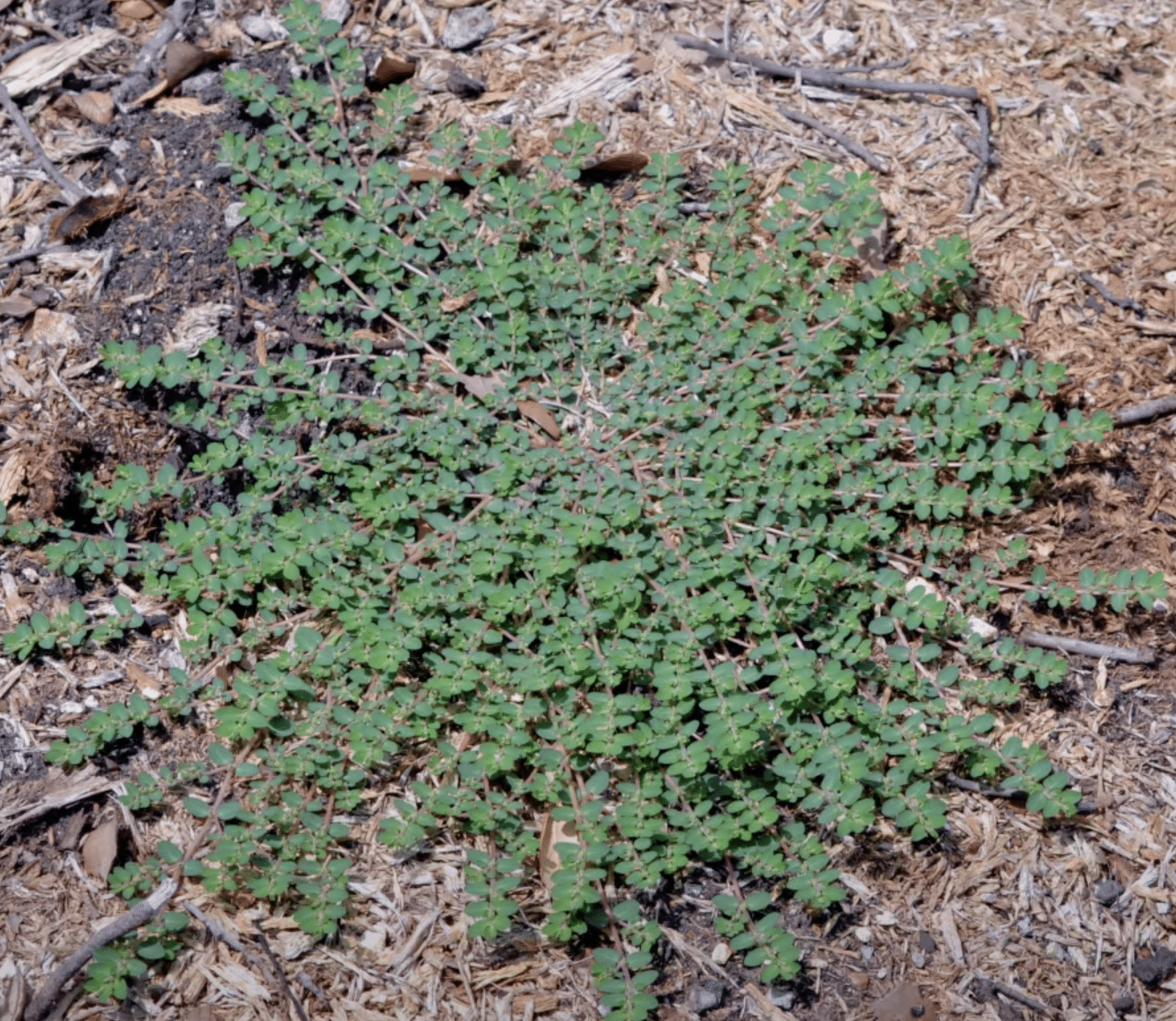Spurge, commonly called spotted spurge, is a fast-growing, invasive weed that thrives in warm weather. There are various types of spurge weeds, such as spotted spurge, creeping spurge, nodding spurge, and petty spurge. But whether the variety is low growing or tall growing, it can crowd out more desirable plants with its tenacious ability to spread via its roots and seeds. In fact, this tough summer weed is known to grow on lawns, sidewalk cracks, roadsides–anywhere it can dig in.
Don’t confuse spotted spurge with leafy spurge. Leafy spurge is also invasive but is a perennial weed with a tall growth habit. Here, we’ll discuss spotted spurge, the most common in lawns and landscaping beds. Learn about and how to get rid of spurge weed here.
What Is Spurge?
Spurge is a tough weed that can quickly become a terrible nuisance if it invades your lawn and garden beds. Just one spurge weed flower can produce hundreds of seasons during the growing season. Moreover, the weed is toxic for people, pets, and grazing animals. Unlike purslane, spotted spurge weed produces a milky sap that can irritate the skin if it comes in contact with it (an easy way to tell the difference between spurge and purslane). If the sap gets on the lips or in your pet’s mouth, it can cause a burning sensation. If you have kids and pets that spend time in your yard, you’ll want to get rid of spurge plants quickly, ideally before seed production.

Spurge seeds germinate when soil temperatures are above 75 degrees Fahrenheit. Gardeners may wish to apply pre-emergent herbicide before soil temperatures get too warm for best results. Spurge weed thrives when soil temperatures become consistently warm. Learn more about applying pre-emergent herbicide treatment and post-emergent herbicide treatment later on. Once frost occurs, these weeds die but seeds remain dormant.
Spotted Spurge Weed
Spotted spurge (Euphorbia maculata), also known as prostrate spurge, is a low-growing summer annual weed that tends to grow a dense mat. A single spotted spurge weed might grow two feet across if left unchecked–even three feet if conditions are ideal for the weed. Spotted spurge features dark green leaves that are slightly hairy. Sometimes the leaves have a central red spot. Spotted spurge weeds have slightly pink stems (they might appear maroon) that are also slightly hairy. The stems produce sap.
Creeping Spurge
Creeping spurge is also an annual summer weed that produces greenish-white flowers. Unlike spotted spurge weeds, creeping spurge has smaller, more rounded leaves and roots at the nodes. It also does not have hairy stems. It is not as common as spotted spurge but can be quite difficult to eliminate once it infests lawns, flower beds, or vegetable garden beds. A healthy lawn prevents weeds like creeping spurge from taxing it.
How to Identify Spotted Spurge
Spotted spurge weed is easy to identify if it features the telltale red spot on its oval leaves; however, this spot may not always be present. Prostrate spurge grows outward. Look for this growth habit, hairy leaves, and pinkish stems to identify spotted spurge plants. Its foliage grows from a central taproot; the growth may appear straggling or quite dense. Unlike creeping spurge with more pronounced, recognizable flowers, spotted spurge weeds produce tiny, almost inconspicuous pink flowers. However, you may notice them when examining the weeds for identification.


How to Get Rid of Spurge in Lawns
If you have spotted spurge growing in your lawn, your lawn may already have been struggling. A healthy, thick lawn is its own best defense against spurge weeds like spotted spurge or petty spurge plants. Ideally, prevent spurge weed from growing in the first place by maintaining a healthy lawn. Otherwise, aim to control spurge before it produces its weed seeds with pre-emergent herbicides. Seeds begin to sprout when the soil temperature exceeds 75 degrees F. After sprouting, post-emergent herbicides will be needed for effective spurge control.
Get Rid of Spurge Naturally
If you only have a few spurge weeds growing in your lawn or garden beds, you could try to get rid of the spurge weeds by hand. However, manual weed control is not always effective in the case of spurge because any part of the root left in place can grow into a new spurge plant. Moreover, if the plant has already produced spurge seeds, the weed seeds can germinate and grow into new spotted spurge plants. Wear gloves to protect your skin from the stem’s sappy substance if you opt for hand-pulling spurge weeds. Hand pulling is not usually an option for large prostrate spurge infestations. However, you might opt for hand pulling for weed control if you find spotted spurge weed in your vegetable gardens.
Get Rid of Spurge with Chemical Control
The use of chemical control is an effective way to get rid of spurge weeds. While it’s easy to kill existing spurge with weed killer or non-selective herbicide, it can be more challenging to keep it from returning to residential lawns or flower beds once it has grown there. The best spurge control time for applying weed killer to get rid of spurge is in late spring and early summer when the spurge weeds are still young. Mature weeds of this type are less responsive to all weed-killer products and a pre-emergent herbicide.
While non-selective weed killers will get rid of spurge, they’ll also kill other plants rather than only specific weeds, so be careful when applying a non-selective herbicide. A pre-emergent herbicide can be effective in getting rid of spurge weed if applied before the spurge seeds have sprouted. For reliable spurge control, aim to use a pre-emergent herbicide application in early spring or a post-emergent herbicide in late spring or the beginning of summer to eliminate these weeds from your lawn and flower beds. Again, it’s best to avoid non-selective herbicides.
How to Prevent Spotted Spurge
To prevent weeds like spurge from taking up residence on your lawn, you’ll want to eliminate any bare spots in your grass where spurge prefers to grow. A struggling lawn can be an invitation to spurge and other common weeds. If soil is compact, aerate and overseed any weak areas to promote healthy grass growth which will crowd out other weeds too. Also, trim nearby trees to ensure your struggling lawn gets adequate sunlight, and water your lawn regularly. Applying pre-emergent herbicides can also help prevent spurge weeds from growing in your landscape. Follow the directions on the pre-emergent herbicide label for best results.
In addition, avoid throwing spurge weeds on your compost pile where they can root and grow into a plant. Some spurge begins by root pieces rather than seeds. Inspect your flower beds or vegetable garden bed regularly to prevent weeds from getting out of control.
Spurge Weed FAQs
How do you kill spurge without killing grass?
Non-selective herbicides can kill spurge weed as well as most any other plant. To protect your lawn, it’s best to use a pre-emergent herbicide to kill spurge before it sprouts or a post-emergent herbicide to kill sprouted spurge plants. Spurge weed killer is less effective on spurge weeds that are already mature. Follow directions when applying pre-emergent herbicide treatment or post-emergent herbicides.
How do I get spurge weeds out of my lawn?
While you can try eliminating a spurge plant by hand, it’s less effective than applying a pre-emergent herbicide or spurge weed killer / post-emergent herbicide. To keep spurge weeds from returning to your lawn and flower beds, apply a pre-emergent herbicide in early spring and a post-emergent herbicide treatment during the late spring growing season. If using post-emergent herbicides, apply when the spurge plants are still young.
Will vinegar kill spurge?
White vinegar can kill spurge. However, usually, one application will only harm the spurge plant foliage and may not eliminate spurge. Multiple applications may be needed to eliminate spurge. Also, if the spurge has already produced seeds, the plant may return after those seeds germinate. A post-emergent herbicide is more effective for killing spurge weeds. Follow the directions on the post-emergent herbicide label. Prevent it from returning with pre-emergent herbicides in early spring.
What does spurge grass look like?
Spotted spurge in grass (also called prostrate spurge) has reddish marks on its leaves–usually. Spotted spurge weed also has pinkish stems that produce a milky white sap and small pink flowers. This dark green plant can be killed in lawns with a post-emergent herbicide. Prevent it from growing with a pre-emergence herbicide.

